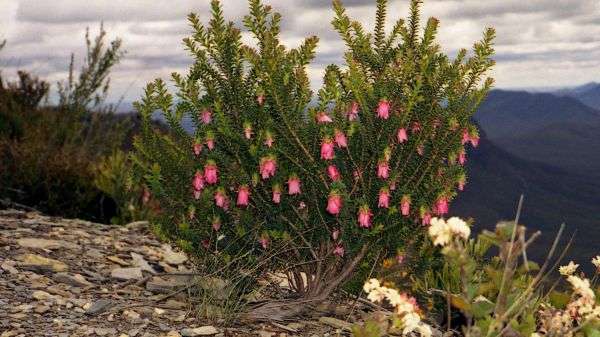Great Southern research receives technical boost

The mountain bell shrub, which is partly named after Charles Darwin's grandfather, can be examined at a molecular level for the first time in Albany after the installation of a state-of-the-art genetics laboratory.
The equipment, at UWA's Centre of Excellence in Natural Resource Management, enables students to extract, amplify and analyse sections of DNA across various fields of research.
UWA plant genetics and evolutionary biology postgraduate student Damien Rathbone has benefited from the technology since June.
His study compares more than 500 DNA samples from Darwinia (named after Erasmus Darwin) plant species endemic to the Stirling Range to assess their response to climate change.
Mr Rathbone no longer has to travel to Perth to carry out the several stages involved with the process.
Extraction
First, a tissuelyser machine breaks down a cell tissue sample to expose the DNA.
A heating block, which can process up to 48 samples simultaneously, warms the tissue while a solution breaks it down further.
The cells are then centrifuged in two steps.
During the first stage, the DNA is separated by 'spinning down' the sample through extraction columns, which the DNA binds to.
The DNA is washed off the columns with a solvent to produce a solution containing the DNA.
One microliter of the solution is placed in a microvolume spectrophotometer, which uses light refraction to obtain precise measurements of the concentration and DNA purity.
Amplification
A key piece of new equipment is a polymerase chain reaction machine, which amplifies genetic markers.
"By cycling the temperature and using DNA polymerases [enzymes that replicate DNA by assembling its 'building blocks'], it makes copies of the sections of interest,'' Mr Rathbone says.
This reaction results in DNA fragments that can be viewed through a process called agarose gel electrophoresis.
To do this, the sample is loaded onto a jelly-like plate with wells on one side and placed inside a container of solution.
When an electric current passes over the sample, the negatively charged DNA fragments or 'bands' separate by length.
Quantification
After the sample is stained, the gel documentation system shines an ultraviolent light onto the gel and the bands fluoresce to create a digital image.
If required, the material is sent interstate or overseas for further molecular sequencing.
Mr Rathbone says using the technology his study will compare mutational differences of the DNA sequences to determine when Darwinia evolved and how long their populations have been isolated on individual mountains.
Provided by Science Network WA
This article first appeared on ScienceNetwork Western Australia a science news website based at Scitech.



















